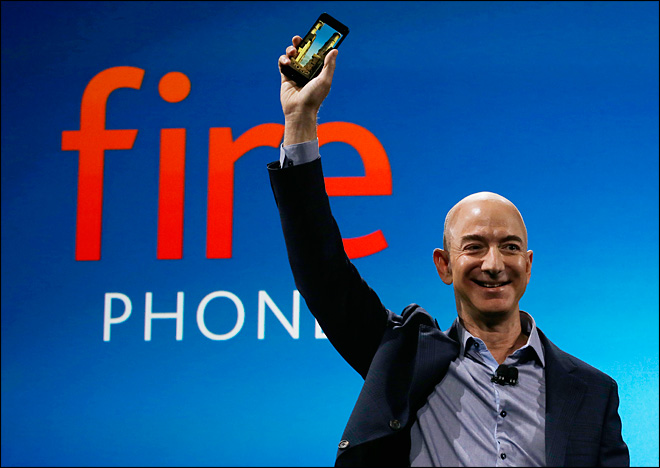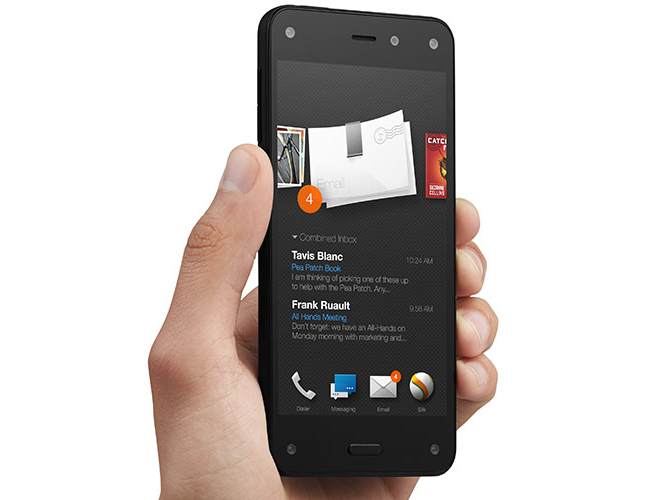Amazon Drops Fire Phone's Price To 99 Cents On Contract, Is It Too Little Too Late?
Two months after it launched the Fire Phone, Amazon is dropping the price from $199 on contract, to only $0.99, also on contract. The move comes after 3rd party reports that the Fire Phone has been selling tens of thousands of units, rather than millions, which is probably what Amazon was expecting.
"Fire is now 99 cents with a two-year contract, plus customers get one full year of Prime included," said Ian Freed, Vice President, Amazon Devices. "With access to all of the Prime content, Mayday, 32GB of memory and free unlimited cloud storage for photos, plus the exclusive Dynamic Perspective and Firefly features, Fire is another example of the value Amazon delivers to customers."
Unfortunately, even at this price, it's probably too late to change the market's perception about this phone. If Amazon wanted to offer the device for a low price, it should have done so from day one, when it had the opportunity to make a big splash; now, it's going to be much harder to convince potential buyers to reconsider. Amazon may not get the opportunity to do that again until a potential Fire Phone 2 launch.
Amazon would have likely had more luck with the Fire Phone if it had used the same strategy that has worked so well for the company in the past with devices such as the Kindle Fire: selling low-price, but high-value, unlocked devices. Then Amazon may have also had the ability to sell the phone on multiple networks, rather than be tied to a single one.
Amazon chose to go with an on-contract deal instead and use AT&T as an exclusive network for the Fire Phone, limiting its potential buyers through both network reach and a high upfront cost of $200 -- which is the same cost as other flagship phones. Yet the Fire Phone doesn't offer anything particularly exciting or useful than other high-end handsets beyond the four cameras that enable the "Dynamic Perspective" (Amazon's parallax-like effect for 3D objects and wallpapers), and even that could be considered a gimmick. Amazon also has a much more limited ecosystem of Android apps, which can reduce the Fire Phone's sales potential, too.
Hopefully, Amazon will learn a few lessons from this experiment, and will have a much better planned launch for its next-generation Fire Phone 2 (if there will be one next year).
Follow us @tomshardware, on Facebook and on Google+.
Get Tom's Hardware's best news and in-depth reviews, straight to your inbox.
Lucian Armasu is a Contributing Writer for Tom's Hardware US. He covers software news and the issues surrounding privacy and security.
-
alidan sell it to me at cost, and i will get it for wifi use and a easy to use and move pictures around camera. all i want is an mp3 player than can crap out video and browse the web a bit, possibly use some internet radio stations so i can hook it up to my good sound system... plus the apps that can read qr codes and barcodes and look up what the crap is.Reply
i have a use for an at cost device that is good... thats all i want... was hoping this would be the phone equivalent of the kindle.
-
kawininjazx I was shocked when it came out and the price was up there with the Galaxy and iPhone. It should have been at most a $299 off contract and free on contract if they wanted to compete.Reply -
thundervore Too little too late, put a nail in their coffin. After using a kindle fire I would not want Amazons flavor of Android on my phone. It <mod edit>Reply
<Mod Note: Language people, language>
Ok, let me reverse my last two words of that sentence since its considered bad language. ssa skcus -
dotaloc Replyi have a use for an at cost device that is good... thats all i want... was hoping this would be the phone equivalent of the kindle.
I got the Moto G from boost mobile and flashed it to page plus, but have considered getting one for my son as a wifi device (disable cell radio). Excited to see what happens to the price with the new G coming out. -
2Be_or_Not2Be To answer the question in the title, YES - it's too late. Best wishes, Amazon, for your next phone launch!Reply -
firefoxx04 I was all about the Amazon phone until I remembered that they are locked down andoid just like the kindle.Reply
Give us real andoid. You cannot compete with LG, HTC, and Samsung like this. The kindle only sells because it was one of the first to offer ebooks and it took off. Using the Kindle Fire HD for regular andoid things is a pain. -
house70 Not gonna save it. Remember Facebook phone. Exclusivity was just the final blow to a device that was just too "peculiar".Reply -
zakaron I remember when Nintendo dropped the price of the 3DS shortly after launch. Fans who purchased the release versions were up in arms, so much so that Nintendo gave away like 5 games to those who invested early. Wonder if those who paid $199 will see any compensation back from Amazon?Reply

